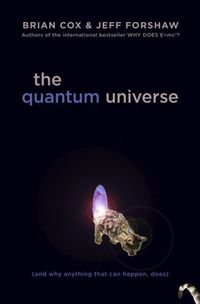Review: The Quantum Universeby Jeff Foust
|
| “Quantum theory is perhaps the prime example of the infinitely esoteric becoming the profoundly useful,” Cox and Forshaw write. |
There has been no shortage of efforts to try and explain quantum physics in a way that can be easier to grasp (including, not surprisingly, a Quantum Physics For Dummies book.) One of the most recent, and promising, efforts is The Quantum Universe, by Brian Cox and Jeff Forshaw. Cox, a physicist perhaps best known for his various appearances on television science documentaries (and, in a previous career, as the keyboardist for a British pop band), and fellow physicist Forshaw attempt to provide a readable yet rigorous background to quantum physics.
Their approach is to lead the reader through the science of quantum physics, with a little bit of history and other background intermixed, trying to find a balance of clearly explaining these subjects without getting too simplistic. An analogy they use throughout the book is the use of analog clock faces to describe waves and particles in quantum mechanics. At the same time, though, they don’t shy away from actual equations to describe the physics taking place. (Stephen Hawking, in his classic A Brief History of Time, said he was warned by a book editor that every equation in his book would halve its sales, hence he included only the famous E=mc2. Hopefully that logic does not hold up for Cox and Forshaw, or else their sales will be pitifully low.) Does this approach hold up? For those willing to put in a fair amount of attention and thought, and are not intimidated by the sight of an equation or two, then yes.
“Quantum theory is perhaps the prime example of the infinitely esoteric becoming the profoundly useful,” they write in the book’s introductory chapter. That, they admit, can sound a bit hubristic, but it’s demonstrated by the importance quantum physics has had in our understanding of how the universe works. In the book’s epilogue, they use quantum physics to explain why some stars at the end of their lives turn into white dwarfs, while larger ones become titanic supernovae. They chose that astronomical example because it is “one of the most spectacular demonstrations of the sheer power of modern physics,” even if, they acknowledge, it’s not necessary the most useful one in everyday life. “This means that the science is right; that quantum mechanics, no matter how strange it may seem, is a theory that describes the real world,” they conclude. And, after reading this book, it may seem a little less strange.
